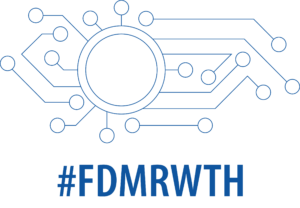
Quelle: Unsplash
Forschungsdaten sind der Rohstoff von Forschungsarbeit und damit maßgebend für den wissenschaftlichen Fortschritt. Damit der größtmögliche Nutzen aus den Daten gezogen werden kann, ist der Zugang zu den Daten und ihre Nachnutzbarkeit essenziell. Sie sollten daher keinesfalls auf dem USB-Stick gespeichert in der privaten Schublade verschwinden.
Durch die Veröffentlichung von Daten und deren Zitierung werden Forschungsergebnisse sichtbarer. Dies kommt der akademischen Reputation zugute.
Zudem haben andere Forschende die Möglichkeit, einen Blick auf die Daten zu werfen und zu schauen, ob diese einen Mehrwert für die eigene Studie bieten. So können Forschungsergebnisse durch die Integration und erneute Analyse gewinnbringender werden. Möglicherweise entstehen sogar neue Kooperationen.
Ein weiterer entscheidender Grund für mehr Datenoffenheit sind Meta-Analysen. In einigen Fachbereichen sind signifikante Analysefehler von etablierten Verfahren oder Werkzeugen erst dadurch erkannt worden, dass Meta-Analysen über viele Studiendaten hinweg Inkonsistenzen aufzeigten. Solche Analysefehler fallen in einer einzelnen Studie nicht immer auf, können aber falsche Ergebnisse erzeugen und somit die gesamte Studie zunichtemachen. Durch Meta-Analysen kann dies vermieden werden.
Wo publiziert man Forschungsdaten?
Daten und Publikationen können in Forschungsdatenrepositorien archiviert und über diese veröffentlicht werden. Für Forschungsdaten der RWTH kann z.B. das institutionelle Repositorium RWTH Publications genutzt werden. In den letzten Jahren ist eine Vielzahl an unterschiedlichen, auch fachspezifischen Repositorien zusammengekommen. Je nach Fachgebiet kann die Auswahl sehr groß und unübersichtlich sein.
Die Seite re3data kann Abhilfe schaffen. Es handelt sich dabei um ein international anerkanntes Nachweisinstrument, welches einen Überblick über existierende Forschungsdatenrepositorien bietet. Anhand von Icons lässt sich ablesen, welche Merkmale die Plattformen aufweisen. Zudem besteht die Möglichkeit, gezielt nach gewünschten Charakteristiken (z. B. Open Access) zu filtern.
Entscheidungsschwierigkeiten?
Qualitätskriterien wie Zertifikate können die Entscheidung für oder gegen ein Repositorium deutlich erleichtern. Die Zertifikate geben den Datenerzeugenden die Sicherheit, dass die Daten langfristig auffindbar, nutzbar und zitierbar sind.
Die Zertifikate für Repositorien werden von verschiedenen Initiativen anhand unterschiedlicher Kriterien vergeben. Das CoreTrustSeal und das nestor-Siegel sind beispielsweise bewährte Siegel, die hohe Qualitätsmerkmale ansetzen.
Publikation im Datenjournal
Eine weitere Publikationsmöglichkeit bietet die Veröffentlichung der Forschungsdaten in Datenjournalen. Datenjournale verlangen keine wissenschaftliche Interpretation der Daten, sondern eine detaillierte Beschreibung der Daten in Form eines Papers bzw. eines Data-Curation-Profile. Der Datensatz wird in einem Repositorium hinterlegt und der Artikel im Journal verweist auf den jeweiligen Datensatz.
Mehr erfahren
Weitere Hinweise und Informationen zum Thema bietet das Lehrvideo Forschungsdaten zu Publikationen. Lesen Sie auch die Anleitung zum Veröffentlichen von Forschungsdaten auf RWTH Publications.
Wenn Sie darüber hinaus Fragen zur Datenpublikation oder zum Forschungsdatenmanagement im Allgemeinen haben, wenden Sie sich einfach an das ServiceDesk. Das FDM-Team freut sich auf Ihre Nachricht.
______
Verantwortlich für die Inhalte dieses Beitrags ist Sophia Nosthoff.





Schreibe einen Kommentar
Du musst angemeldet sein, um einen Kommentar abzugeben.